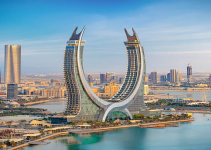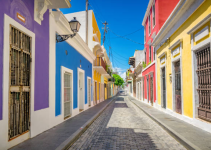Mexico City caught me off guard the first time I visited. I’d done my research, read all the guides, and still managed to make mistakes that cost me time, money, and a few genuinely uncomfortable moments.
Here’s what nobody tells you upfront: this massive metropolis doesn’t play by the rules you might expect. It’s got its own rhythm, its own logic, and if you don’t know what to watch out for, you’ll learn the hard way.
So let me save you some trouble. These aren’t your typical tourist warnings—they’re the real-deal missteps that can turn your trip from amazing to frustrating faster than you can say “¿dónde está el baño?”

Things to Avoid in Mexico City
Every city has its quirks, and Mexico City has more than most. What follows are the specific situations, behaviors, and choices that’ll make your experience significantly better if you simply steer clear of them.
1. Taking Taxis from the Street
You see them everywhere. Those green-and-white cabs cruising past, driver waving, beckoning you inside. Don’t do it.
Street taxis in Mexico City have a reputation problem for good reason. While many drivers are perfectly honest, enough incidents happen with unregistered cabs that the risk simply isn’t worth it. We’re talking about everything from overcharging to actual safety concerns. The Metropolitan Police report that a significant portion of crimes against tourists involve unofficial taxi services.
Your better option? Use Uber, Didi, or the official sitio taxis (authorized taxi stands) you’ll find at hotels, restaurants, and major attractions. These services track your route and driver, giving you a layer of accountability that street cabs don’t offer. Yes, it might cost a bit more. But that extra couple of dollars buys you peace of mind and a much lower chance of a bad experience.
I learned this after a friend got taken on a “scenic route” that tripled the fare and included a stop at an ATM. She was fine, but shaken. After that, we all switched to ride-sharing apps and never looked back.
2. Drinking Tap Water (Even for Brushing Your Teeth)
This one seems obvious until you’re half-asleep at your hotel sink, brush in hand, water running. You’ll think, “Just this once won’t hurt.” It might not. But it also might ruin the next two days of your trip.
The issue isn’t that Mexico City’s water system is inherently dirty. The problem lies in the aging pipes that carry water to buildings. These pipes can introduce contaminants that your digestive system hasn’t built up immunity against. Locals often drink bottled water too, so this isn’t about you being weak—it’s about bacteria you haven’t been exposed to before.
Buy bottled water for everything. Brushing teeth. Rinsing fruit. Making coffee in your hotel room. A five-liter jug costs maybe 30 pesos and lasts days. Every restaurant serves bottled water, and street vendors sell it on practically every corner.
The moment you let your guard down is the moment you’ll spend a day intimately acquainted with your hotel bathroom. Pack a refillable bottle, keep it topped up with purified water, and save yourself the misery. Your stomach will thank you.
3. Assuming Everyone Speaks English
Walking into a taquería and launching into English rarely goes well. You’ll get blank stares, awkward silence, and probably the wrong order.
Mexico City isn’t Cancún or Cabo. Sure, people in tourist-heavy areas like Polanco or Condesa might speak some English, but step outside those bubbles and Spanish dominates completely. Your taxi driver probably doesn’t speak English. Neither does the woman at the corner store or the guy selling churros at 11 PM.
Learn basic phrases before you go. “¿Cuánto cuesta?” (How much does it cost?), “¿Dónde está…?” (Where is…?), “La cuenta, por favor” (The check, please). These simple phrases open doors and earn you genuine smiles. Mexicans appreciate effort, even if your pronunciation is terrible.
Download Google Translate. The camera function that translates text in real-time has saved me countless times when reading menus or signs. And honestly, attempting Spanish—even badly—creates connection. I’ve had entire conversations using gestures, broken Spanish, and lots of laughter. Those moments became highlights of my trips, not frustrations.
4. Skipping Travel Insurance
You’re healthy. You’re careful. Nothing bad will happen. That’s what everyone thinks until something does.
Mexico City sits at 7,350 feet above sea level. That altitude hits people differently. I watched a fit 30-year-old struggle with altitude sickness so badly she needed medical attention. Another friend broke her ankle on uneven sidewalk. A colleague got food poisoning despite being super careful and spent a night in a private clinic receiving IV fluids.
Medical care in Mexico City is actually excellent and relatively affordable compared to the US. But “affordable” still means hundreds or thousands of dollars if something serious happens. Travel insurance costs maybe $50 for a week-long trip and covers medical emergencies, trip cancellations, and lost belongings.
Check if your credit card includes travel insurance. Many premium cards do. If not, buy a policy before you leave. Read what it covers—make sure it includes medical evacuation, which can cost upward of $25,000 if you need to be transported home for treatment. This isn’t fear-mongering. It’s basic preparedness. The one time you need it, you’ll be incredibly glad you have it.
5. Keeping All Your Valuables in One Place
This applies everywhere, but it matters more in a city of 22 million people where pickpocketing is a practiced skill. Crowded metro cars, busy markets, packed museums—these are prime opportunities for someone with quick hands.
Split everything up. Keep one credit card in your wallet, another in your hotel safe. Carry some cash in your pocket, stash more in a hidden compartment of your bag. Put your passport in the hotel safe unless you specifically need it that day. Take a photo of your passport, credit cards, and important documents and email them to yourself.
If someone does manage to grab your bag or pick your pocket (and it happens to even careful travelers), you don’t want to lose everything at once. Having backup cards and cash means you can keep functioning while you sort things out.
I use a slim money belt under my clothes for my backup card and emergency cash. Feels a bit paranoid at first, but after seeing someone’s entire trip derailed because their wallet got lifted with everything inside, I stopped caring about looking overly cautious.
6. Visiting Museums on Sundays Without a Plan
Free museum Sunday sounds perfect until you arrive at 11 AM to find a line wrapped around the block three times. Every museum in Mexico City offers free admission to Mexican residents on Sundays, which means they’re absolutely packed.
The Museo Nacional de Antropología, Palacio de Bellas Artes, Museo Frida Kahlo—all of them have wait times that can stretch to two or three hours on Sunday afternoons. You’ll spend more time standing in line than actually seeing exhibits.
Go on literally any other day. Pay the admission fee (which is usually quite reasonable anyway—often under $5 USD). You’ll actually be able to move through the galleries, read the descriptions, and take photos without being jostled by crowds. Early mornings on weekdays are absolutely ideal. You might even have entire rooms to yourself.
If Sunday is your only option, arrive right when doors open. We’re talking be-there-by-9-AM level commitment. You’ll beat most of the crowd and have a few blessed hours before the masses arrive. But really, if you can possibly visit any other day, do it. The experience is infinitely better.
7. Eating at Tourist-Trap Restaurants Near Major Attractions
That restaurant right across from Bellas Artes with the English menu and pictures? The one with someone outside trying to pull you in? Yeah, skip it. You’ll pay triple the normal price for mediocre food while authentic taquerías serving incredible meals sit three blocks away.
Mexico City has some of the best food on the planet. But tourist areas drive up prices and drive down quality because they know visitors don’t know any better. These spots survive on people who won’t ever come back, so they have zero incentive to maintain standards.
Walk a few blocks away from major sights. Look for places where you see locals eating, where the menu is in Spanish only, where the plastic chairs don’t match and the walls need paint. These are your spots. The family-run fondas serving comida corrida for 80 pesos. The taco stands with lines of construction workers at lunch. The juice bars where your fresh-squeezed orange juice costs 25 pesos instead of 85.
Ask your hotel staff or Airbnb host for recommendations. They’ll send you to the real places. Use Google Maps to find highly-rated spots with reviews in Spanish—that’s how you know locals actually eat there. Your meals will be better, cheaper, and way more memorable than anything served to tourists in the Zócalo area.
8. Ignoring the Altitude
Seven thousand feet doesn’t sound that high until you climb a flight of stairs and find yourself gasping like you just ran a marathon. The thin air in Mexico City is real, and it affects everyone differently.
Your first day, take it easy. Don’t plan to hit five museums and walk 20,000 steps. Sleep if you’re tired. Drink water constantly—like, more than you think you need. The combination of altitude and dry air dehydrates you faster than sea level. Alcohol hits harder too, so if you’re planning to try some mezcal, pace yourself. One drink at altitude can feel like two.
Some people get headaches. Others feel dizzy or nauseated. A few get genuinely sick. If you’re particularly sensitive, you can buy altitude sickness medication before you go or pick some up at any Mexican pharmacy without a prescription. But for most people, hydration and taking it slow the first day does the trick.
Listen to your body. If you need a nap, take one. If you’re breathing hard, slow down. The city isn’t going anywhere, and pushing yourself when you’re altitude-affected just makes everything harder. By day two or three, you’ll acclimate and feel normal again.
9. Leaving Your Phone Out on Restaurant Tables or in Cars
Your phone on the table while you eat outside. Your phone visible on the car seat while you run into a shop. These are invitations for theft.
Motorcycles zip past outdoor restaurant tables and snatch phones so fast you won’t process what happened until they’re gone. Cars get broken into if valuables are visible through windows—and I mean they’ll smash a window for an old pair of sunglasses. Prevention is simple but requires constant awareness.
Keep your phone in your pocket or bag when you’re outside, even at restaurants. If you need to use it, hold it, don’t set it down. In cars, put everything in the trunk or completely out of sight before you even drive to your destination. Thieves watch parking areas and target cars with visible items.
This isn’t paranoia. This is just being smart in a huge city where opportunistic theft happens. Most of your time in Mexico City will be perfectly safe, but why make yourself an easy target? The five seconds it takes to pocket your phone can save you hours of dealing with a stolen device and the nightmare of replacing it while traveling.
10. Underestimating Traffic and Distance
Mexico City is enormous. Like, truly massive in ways that don’t register until you’re stuck in traffic for 90 minutes trying to cross town. That museum you want to visit that’s “only 8 kilometers away”? It might take an hour to get there during rush hour.
Traffic here is legendarily bad. Morning rush lasts from roughly 7 to 10 AM. Evening rush starts around 5 PM and can stretch past 8. During these windows, what should be a 20-minute drive becomes an hour-plus ordeal. The metro gets incredibly crowded during rush hour too—we’re talking sardine-can levels of packed.
Plan your days by neighborhood rather than bouncing all over the city. Spend a morning exploring Roma and Condesa. Dedicate another day to Coyoacán and the Frida Kahlo museum. Group attractions geographically so you’re not spending your entire trip in transit. Check Google Maps before you head out to see current traffic conditions, and if it shows red everywhere, maybe grab coffee and wait 30 minutes.
Build buffer time into everything. If you have dinner reservations, leave an hour before you think you need to. If you need to catch a flight, give yourself way more time than seems reasonable. Missing experiences because you underestimated Mexico City’s traffic is the kind of frustration that’s completely avoidable with realistic planning.
Wrapping Up
Mexico City rewards smart travelers. The ones who do a little homework, stay aware of common pitfalls, and adapt to how things actually work here rather than expecting the city to bend to tourist expectations.
These ten things aren’t meant to scare you. They’re meant to prepare you. Because once you know what to avoid, you’re free to focus on what makes this city incredible—the food, the art, the history, the people, the endless neighborhoods to explore.
Go prepared, stay smart, and you’ll have the kind of trip that makes you immediately start planning your return visit before you’ve even left.


